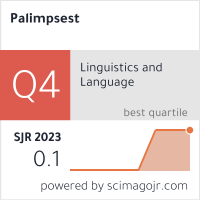LOLITA – FROM AN ICON TO A COVER GIRL
DOI:
https://doi.org/10.46763/PALIM23816137vAbstract
Lolita is one of the rare narrative works that divides the readers globally, and literary critics. It is a novel about which there are numerous conflicting and divided opinions. Some consider it a masterpiece of Russian-American literature, while the others perceive it as a controversial, amoral, and erotic reading not worthy of holding the title of a world literary classic. Lolita directly addresses the readers, encouraging them to reflect on their own ethical and moral life attitudes and their relationship to the world. Lolita is not an erotic or pornographic novel, but a narrative story about awareness and challenges, the psychological dimension of a man to develop empathy, curiosity, kindness, and excitement. The fantastic linguistic discourse of the novel, regardless of whether in Russian of English, places this novel in the context of the greatest literary achievements in the history.
Keywords: American literature; Russian literature; an icon; multiculturalism, postmodern literature.


